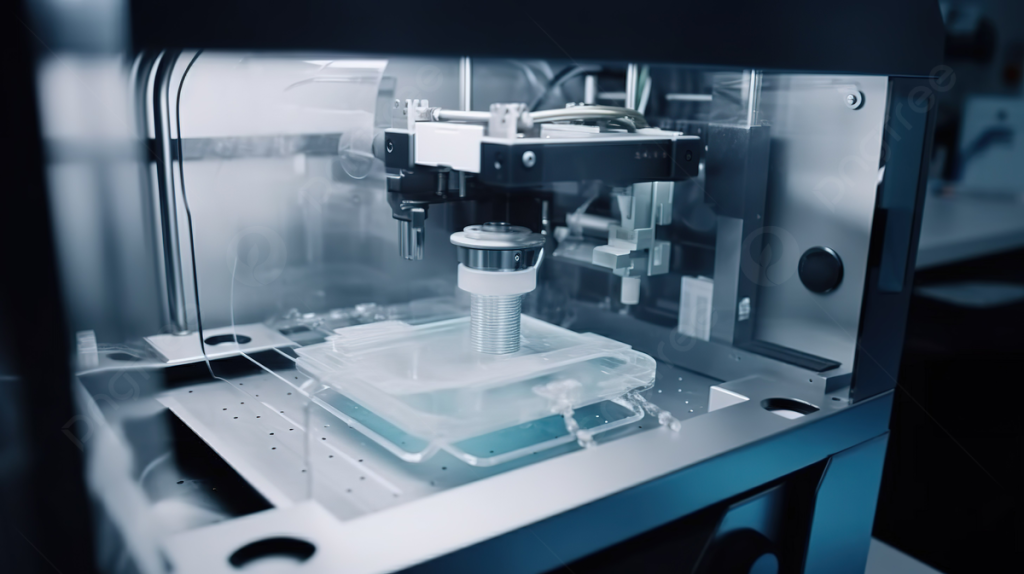Have you ever wondered which manufacturing method reigns supreme in the battle between 3D printing and CNC machining? It’s like choosing between a paintbrush and a chisel, each with its unique strengths and weaknesses. 3D printing offers quick production and cost advantages for complex shapes, but precision can be a challenge. On the other hand, CNC machining delivers highly precise parts with machined surface finish, but comes at a higher price tag. Join us as we delve into the comparison to find out which one is better for your specific needs.
Advantages and Disadvantages of 3D Printing
3D printing offers advantages such as quick delivery of net shape parts and lower cost for making complex shapes, but it can be challenging to achieve high precision and surface finish. When it comes to surface finish, 3D printing processes often struggle with achieving a smooth and polished appearance. The layer-by-layer nature of 3D printing can result in visible stepping on the surface, which affects the overall aesthetics of the part. Precision challenges also arise in 3D printing, as achieving tight tolerances can be difficult due to factors such as machine calibration and material shrinkage. Additionally, there are material restrictions in 3D printing, with some processes limited to specific materials that may not possess ideal mechanical properties. Furthermore, anisotropic grain is a common issue in 3D printed parts where the strength varies depending on the direction of the layers. In terms of cost comparison, while 3D printing is generally more cost-effective for complex shapes compared to traditional manufacturing methods like CNC machining, it may not always be economical for large-scale production due to limitations in speed and material costs.
Advantages and Disadvantages of CNC Machining
When considering the advantages and disadvantages of CNC machining, you should keep in mind factors such as precision, cost, and required setup time. CNC machining produces highly precise parts with a machined surface finish. It can achieve high precision and close correlation to mass production characteristics. However, CNC machining is more expensive compared to 3D printing. CNC machining also requires skilled programming preparation, while 3D printing requires little setup time. Additionally, CNC machining produces waste in the cutting process, while 3D printing is a low-waste option. To summarize:
- CNC machining offers high precision.
- CNC machining is more costly than 3D printing.
- Setup time for CNC machines can be longer.
- Waste production is higher in CNC machining.
Overall, the cost effectiveness and precision of CNC machining must be weighed against the setup time and waste production involved.
Volume and Material Comparison
CNC machining can produce more cost-effective parts compared to 3D printing when setup effort can be shared over multiple parts. While 3D printing may have fewer volume advantages as each part requires the same material and machine costs, CNC machining offers better options for material selection and successful delivery of part properties. CNC-machined parts deliver the native properties of the billet material, largely undisturbed by processing characteristics. On the other hand, 3D printed parts are restricted to those supported by specific processes, imposing construction limitations on the delivery of properties. Furthermore, 3D prints are often weakened by anisotropic grain, porosity, poor layer bonding, and the use of non-engineering materials. Therefore, when considering cost effectiveness and material selection in relation to volume advantages and construction limitations, CNC machining proves to be a favorable choice.
Alternatives and Similarities
Laser cutting can serve as an alternative to 3D printing and offers similar capabilities in producing parts using high-powered lasers. This method provides several advantages over 3D printing, including faster production times, higher precision, and the ability to work with a wider range of materials. Here are some key points to consider when comparing these methods:
- Injection molding vs 3D printing: Injection molding is suitable for high production volume and can produce net shape parts identical to the 3D file. However, it has higher tooling costs compared to 3D printing.
- Laser cutting vs 3D printing: Laser cutting uses high-powered lasers to produce parts, similar to selective laser sintering (SLS) or direct metal laser sintering (DMLS). Both technologies are used in a wide variety of industries and make use of a wide range of metals.
- Die casting vs CNC machining: Die casting is another method of producing complex net shapes in metal. It has considerable tooling costs but becomes more cost-effective as volumes rise.
- Material selection: CNC machining offers better options in material selection and successful delivery of material properties compared to 3D printing.
Introduction and Overview
3D printing and CNC machining are two manufacturing methods that have their own advantages and considerations. When it comes to the pros and cons, 3D printing offers quick delivery of net shape parts at a lower cost, but achieving high precision can be challenging. On the other hand, CNC machining produces highly precise parts with machined surface finish, but it is more expensive compared to 3D printing. In terms of cost comparison, CNC machining can be more cost-effective for producing multiple parts, while 3D printing has low per unit cost regardless of volume. When it comes to material selection, CNC machining offers better options and delivers native material properties undisturbed by processing characteristics. However, 3D printed parts are restricted to specific processes and may have weakened properties due to anisotropic grain or poor layer bonding. As for future developments, both 3D printing and CNC machining continue to advance in terms of technology and capabilities.
Physical Considerations
When considering physical considerations, it’s important to evaluate the feature size, surface finish, and structural requirements of the parts. To ensure optimal results, pay attention to the following:
- Surface finish: Both CNC machining and 3D printing can achieve smooth surfaces, but CNC machines generally produce smoother finishes.
- Tolerance requirements: 3D printers can achieve tight tolerances, but post-machining may be necessary for more precise results.
- Structural parts: Non-structural parts are suitable for conventional 3D printing, while structural parts may require continuous fiber reinforcement or CNC machining.
- Composite materials: Composite 3D printed parts have stronger properties in the X and Y axes compared to metal parts. However, they are not isotropic like metal.
Considering these factors will help you determine whether CNC machining or 3D printing is better suited for your specific physical requirements.
Environmental Considerations
To consider environmental factors, you should assess the service temperature limits and chemical compatibility of materials used in both processes. When it comes to environmental considerations, there are several key aspects to keep in mind. First, recyclability options are important for reducing material waste. Both 3D printing and CNC machining can produce parts using a wide range of materials, including plastics and metals. It is crucial to choose materials that have good recyclability options to minimize waste and promote sustainability.
Another important factor is energy consumption. While both processes require energy, 3D printing generally consumes less energy compared to CNC machining. This can be attributed to the additive nature of 3D printing, where only the required amount of material is used, while CNC machining involves removing excess material.
Furthermore, the use of biodegradable materials should be considered for minimizing environmental impact. Biodegradable materials can break down naturally over time without causing harm to the environment. Assessing the availability and suitability of biodegradable materials for both 3D printing and CNC machining can help reduce ecological footprint.
Lastly, conducting an environmental impact assessment is essential when choosing between 3D printing and CNC machining. This assessment should consider factors such as carbon emissions, water usage, and overall sustainability throughout the entire lifecycle of the product.
Taking these environmental considerations into account will enable you to make a more informed decision regarding which manufacturing process aligns better with your goals for reducing environmental impact while achieving desired outcomes.
Economic Considerations
Considering the budget for equipment and operators is crucial when deciding between CNC machining and 3D printing. Here are some key factors to consider in the economic analysis:
- Cost Analysis: CNC machining is generally more expensive upfront due to the high cost of machines and maintenance. On the other hand, 3D printers have a lower entry cost.
- Production Speed: CNC machining is faster for material removal, while 3D printing time depends on the size of the part. If you need immediate parts, CNC machining may be preferred.
- Material Selection: CNC machining offers better options in material selection, allowing for the delivery of native properties. 3D printing has limitations in material selection and can be restricted by specific processes.
- Maintenance Costs: CNC machines require trained operators and expensive maintenance plans. In contrast, 3D printers can run unattended with minimal training and lower maintenance costs.
Consider these factors when conducting a cost analysis, evaluating production speed, material selection, and maintenance costs to determine which method suits your needs best.
Budget for Equipment and Operators
The initial cost of CNC machines is higher, while 3D printers have a lower entry cost. When considering the budget for equipment and operators, it is important to conduct a thorough cost analysis. CNC machines require full-time operators and programmers, resulting in higher operator training expenses. Additionally, maintenance expenses for CNC machines can be expensive due to their complex nature. On the other hand, 3D printers can run unattended with minimal training and have lower maintenance costs. When creating an equipment budget, it is crucial to consider both the initial purchase price as well as ongoing expenses like maintenance and operator training. To accurately assess the return on investment (ROI), factors such as cost analysis, operator training, maintenance expenses, and equipment budget should all be taken into account during ROI calculation.
Subtractive Vs Additive Manufacturing
When choosing between subtractive and additive manufacturing methods, you should evaluate the advantages and capabilities of each process.
- Design flexibility: Additive manufacturing, or 3D printing, allows for complex designs with intricate details that may be difficult to achieve with subtractive methods.
- Speed and efficiency: 3D printing can produce parts quickly, especially for low-volume production or rapid prototyping, while CNC machining may take longer due to setup and material removal processes.
- Material compatibility: CNC machining can work with a wide range of materials including wood, metals, and plastics. 3D printing primarily focuses on plastics but also includes some niche materials like ceramics.
- Cost effectiveness: 3D printing is generally more cost-effective for low-volume production as it does not require expensive tooling or extensive setup time. However, CNC machining may be more cost-effective for high-volume production.
Overall, both processes have their advantages depending on the specific requirements of your project. It’s important to consider factors such as design complexity, speed requirements, material compatibility, cost effectiveness, surface finish, and precision when making your decision.



